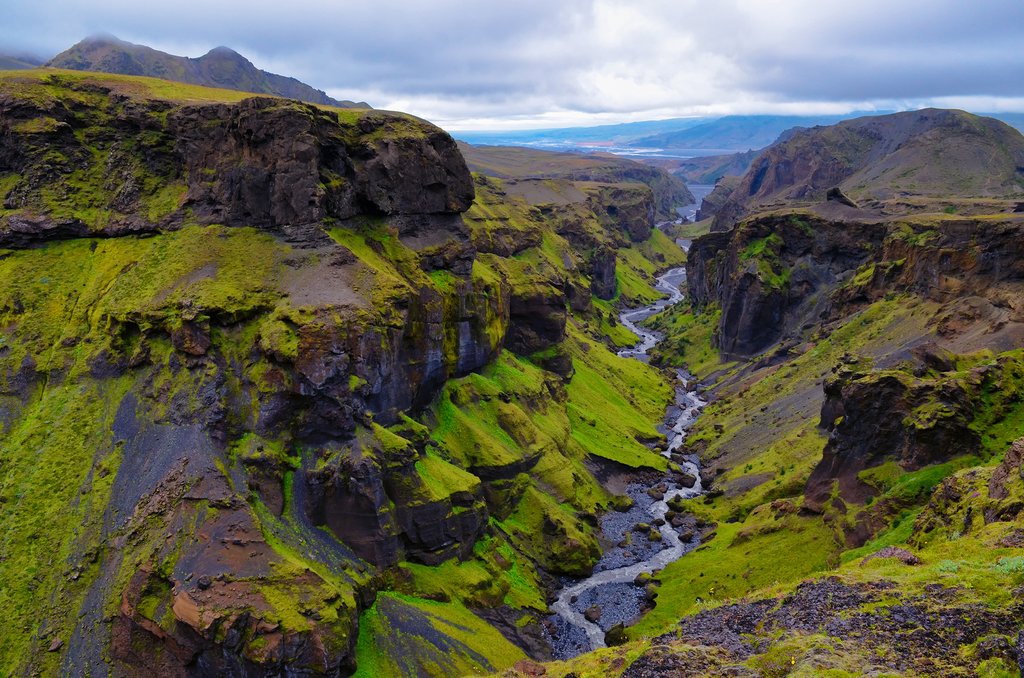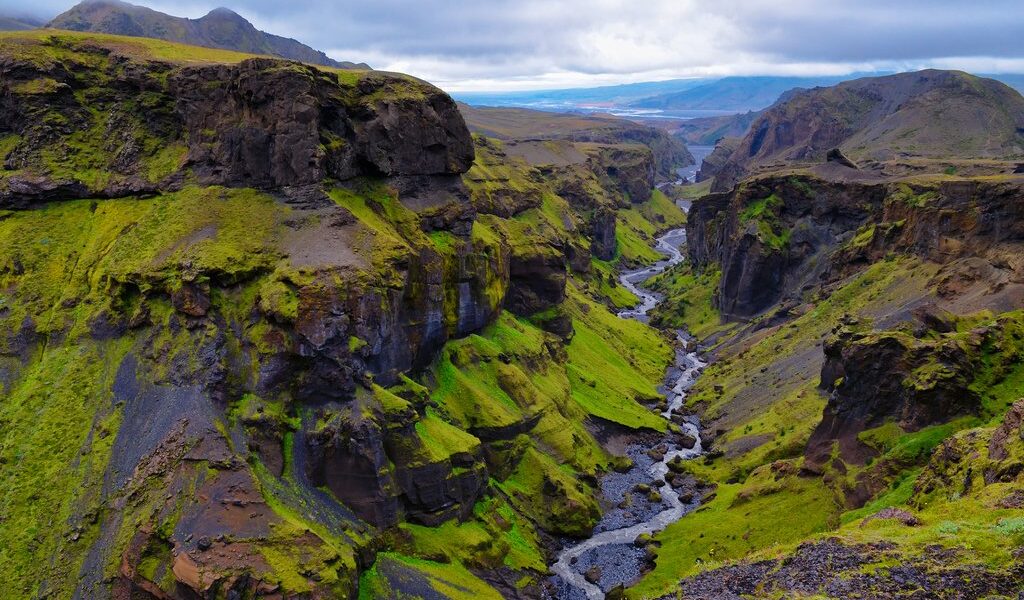
September marks the end of the high season and is a fantastic month to explore Iceland’s iconic scenery without the crowds. This is also a great month to join a Northern Lights tour. Read on to learn what to do and where to go._x000D_
September in Iceland: A Comprehensive Guide
Iceland in September presents a captivating transition. The vibrant greens of summer slowly surrender to the earthy, burnished hues of the Arctic foliage, creating a breathtaking tapestry across the landscape. As the month progresses, the temperature begins its descent, and the frequency of rainfall increases, particularly along the southern and western coasts. However, thanks to the influence of the warming Gulf Stream, September remains a surprisingly pleasant time for aquatic activities, including swimming and even surfing, for those brave enough to embrace the brisk water temperature, hovering around 50 degrees Fahrenheit.
Across Iceland, temperatures typically fluctuate between 41 and 50 degrees Fahrenheit. The highlands and northern Iceland tend to be slightly cooler and drier, but it’s essential to remember that this is still Iceland, where a sudden snow shower can occur at any moment, adding a touch of unpredictable magic to your journey.
One of the most anticipated events of September is the return of the Northern Lights. As the days grow shorter, transitioning from 15 hours of daylight to just over 11 by the end of the month, the celestial dance of the Aurora Borealis becomes increasingly visible. To fully enjoy your Icelandic adventure, heed the popular local saying: “There is no bad weather, only bad dressing.” Packing appropriately is crucial. Layers of clothing, including thermal underwear, and a complete set of waterproof gear are essential to staying comfortable and dry, regardless of the weather conditions.
Beyond the natural beauty, September offers a unique advantage for travelers seeking to avoid the peak season crowds. As the shoulder season begins, you’ll find that flights, hotels, and car rentals often have lower rates. Availability for accommodations is generally better, and there are still plenty of daylight hours for enjoying a wide range of outdoor activities and sightseeing. The weather, while cooler than summer, remains conducive to outdoor pursuits, including swimming in geothermal pools and exploring the diverse landscapes.
Planning Your Icelandic Exploration: Destinations and Activities
Iceland offers a plethora of destinations and activities to suit every interest. This is an excellent time to explore Iceland’s most beloved gems, free from the throngs of summer tourists. Every region of the country offers something special, ensuring a memorable experience.
Many travelers begin or end their trip with a few days in or around Reykjavík. This vibrant capital city boasts design-forward architecture, unique boutiques, trendy restaurants, and a rich Viking history. Reykjavík serves as an ideal base for exploring popular attractions in the Reykjanes Peninsula, such as the renowned Golden Circle and the scenic South Shore.
While exploring the southwest coast, consider taking a trip to the charming town of Vestmannaeyjar, located on Heimaey island. Beyond its remote and geographical beauty, Heimaey is famous for its colorful nesting puffin colonies. As road conditions improve, venture back to the mainland and continue your journey along the Ring Road towards Akureyri, the capital of Northern Iceland. Akureyri provides access to numerous notable sites, including the captivating Lake Mývatn, where you can explore volcanoes, geothermal hot springs, caves, and dramatic lava fields.
If you’re following the Ring Road, be sure to include a visit to Húsavík on Skjálfandi Bay in north Iceland before continuing your clockwise journey around the island. Take your time and explore Iceland’s highlights at your own pace. Make sure to stop at Dettifoss, Europe’s most powerful waterfall, the picturesque village of Seyðisfjörður on the innermost point of an east coast fjord, and Höfn, where you can stretch your legs, enjoy a refreshing cocktail, and admire the stunning views from Ósland, near the Seaman’s Monument.
Remember that the Highlands typically close for the offseason in mid-September, so plan accordingly if you wish to explore this rugged and remote region.
Experiencing Icelandic Culture and Nature: What to Do in September
Despite the arrival of late summer weather, there is still a vast array of activities to enjoy in Iceland. Explore vibrant cities like Reykjavík, Akureyri, Kópavogur, Hafnarfjörður, Siglufjörður, and Húsavík, each offering unique museums, restaurants, and breathtaking natural attractions. Rent a car or join a guided tour to venture into the countryside, discovering coastal villages nestled along rugged fjords, as well as enchanting turf houses and historic churches that seem straight out of a fairytale.
For those with a sporty spirit, consider embarking on a thrilling rafting excursion on the Hvítá River in the Gulfoss Canyon or hiking in Þórsmörk on the stunning Fimmvörðuháls trail. Alternatively, combine hiking and camping in the picturesque Þríhyrningur area in the country’s southwest. For an unforgettable experience, don a drysuit and brave the icy waters of the Silfra fissure in Þingvellir National Park, where you can snorkel or scuba dive between the North American and Eurasian tectonic plates, touching both continents simultaneously.
Embark on a whale watching tour in Faxaflói Bay, or head north to Dalvík or Húsavík to observe the many species of gentle giants that frequent these waters. As the nights grow longer, September marks the beginning of the Northern Lights season. Whether you choose to drive your rental car or join a guided tour by bus, Super Jeep, or boat, venture away from artificial light pollution to maximize your chances of witnessing the mesmerizing Auroras.
Other popular outdoor activities during this month include two of Iceland’s oldest traditions: *Berjamó* and *Réttir*. Join locals as they engage in Berjamó, venturing into nature to pick wild berries such as crowberries that grow in moss-covered lava fields, as well as bilberries and blueberries. Concurrently, throughout the country, farmers and their friends participate in Réttir, the annual sheep and horse round-up.
September Events: Immerse Yourself in Icelandic Culture
September in Iceland also offers a variety of cultural events:
* **Réttir**: This literally translates to “round-up,” and it signifies the time of year when thousands of sheep and wild horses are gathered for the winter months.
* **Reykjavík Jazz Festival**: This five-day festival in early September showcases traditional and contemporary jazz performances in various venues throughout the Icelandic capital. Expect to see seasoned international stars alongside emerging local artists.
* **Reykjavík International Literary Festival**: Reykjavík, a UNESCO-recognized city of literature, hosts this biannual event that features acclaimed authors. Attendees can enjoy readings, seminars, and even dance the night away at the Literary Ball, mingling with their favorite authors.
* **Reykjavík International Film Festival (RIFF)**: This non-profit, 11-day event hosted by the capital is the country’s largest and most culturally diverse film festival. Showcasing new and progressive quality films, panel discussions, workshops, concerts, and exhibitions, the festival celebrates independent filmmaking from around the world.
This detailed guide should help you plan your unforgettable September adventure in Iceland!
B-1120

